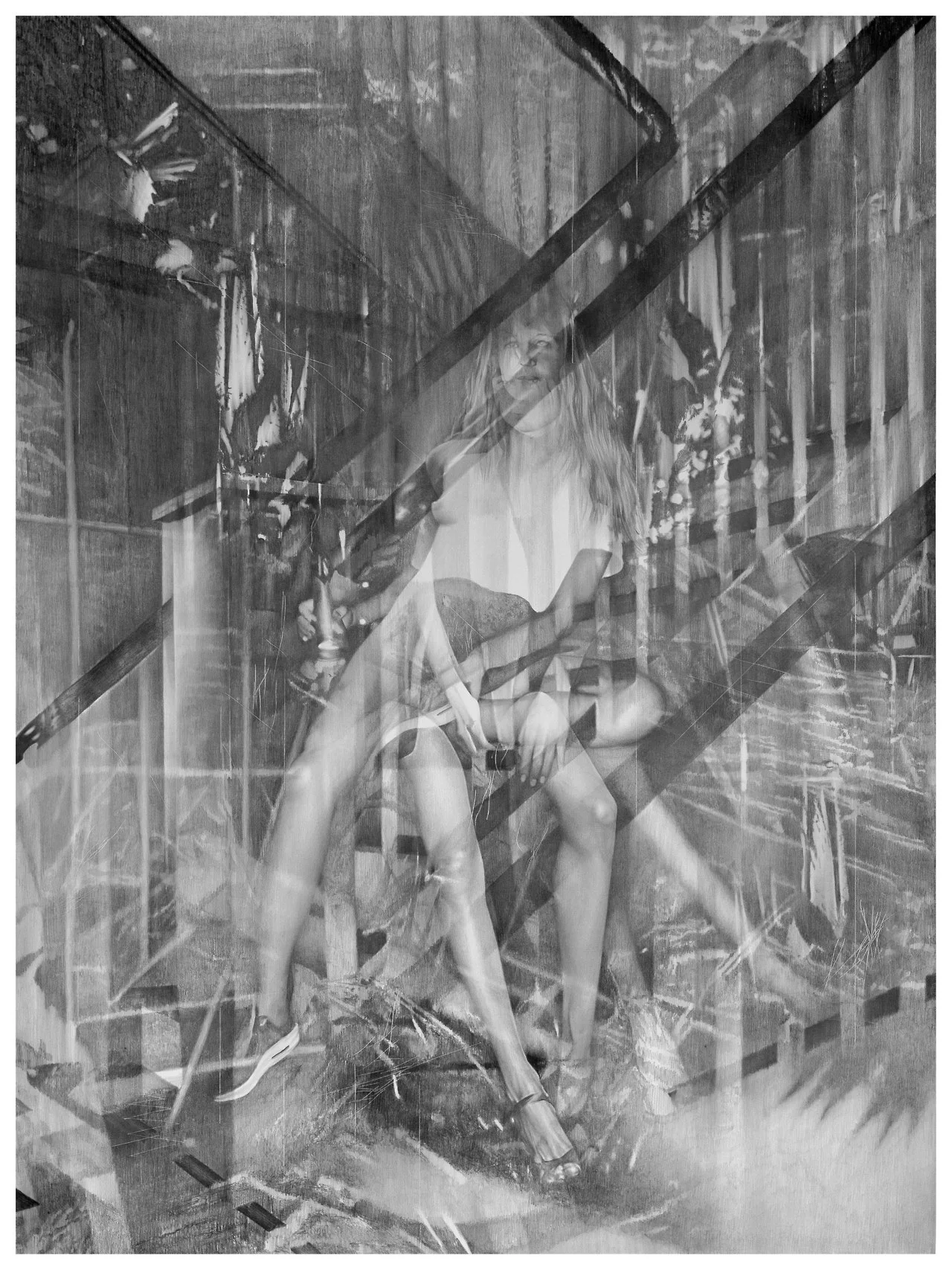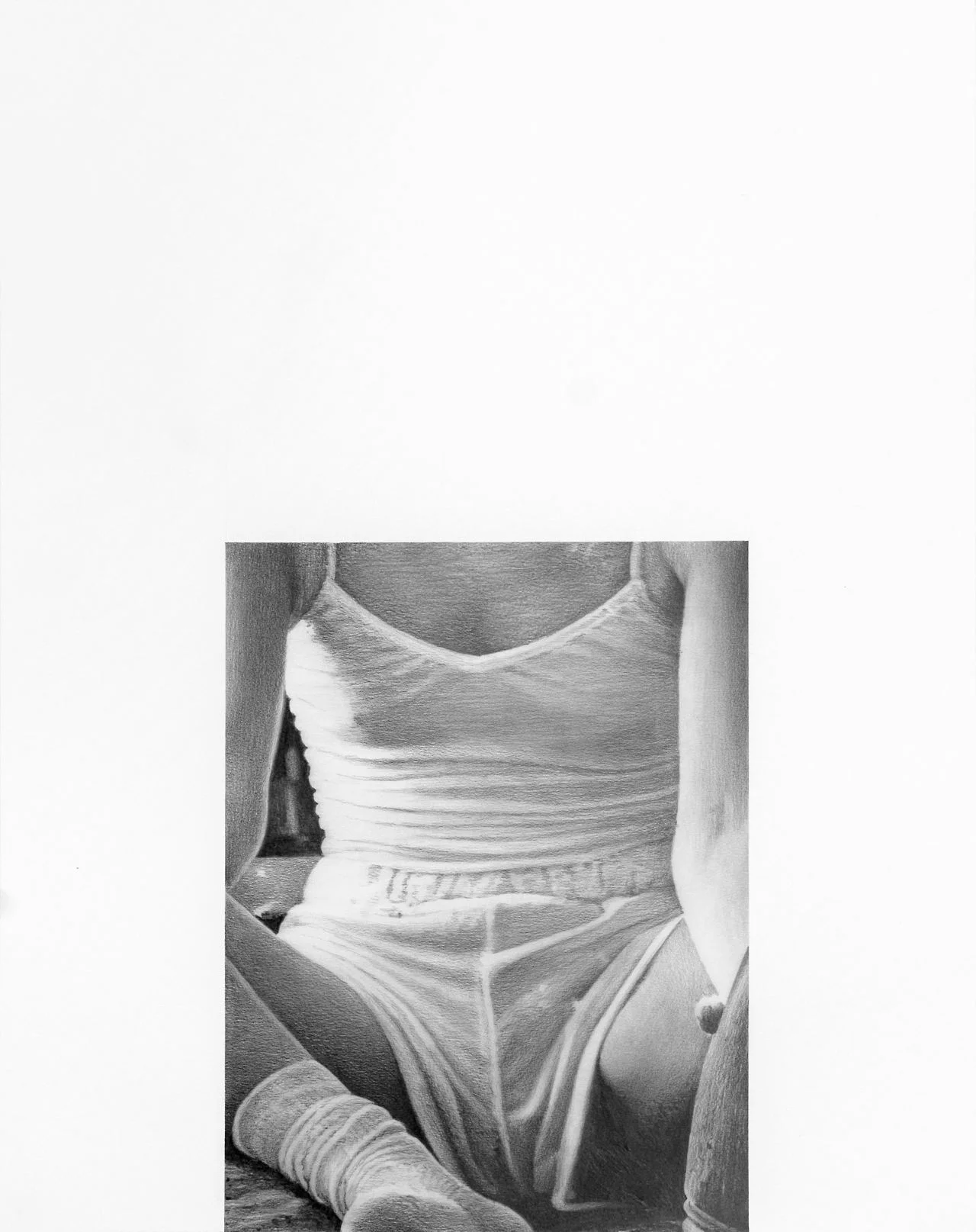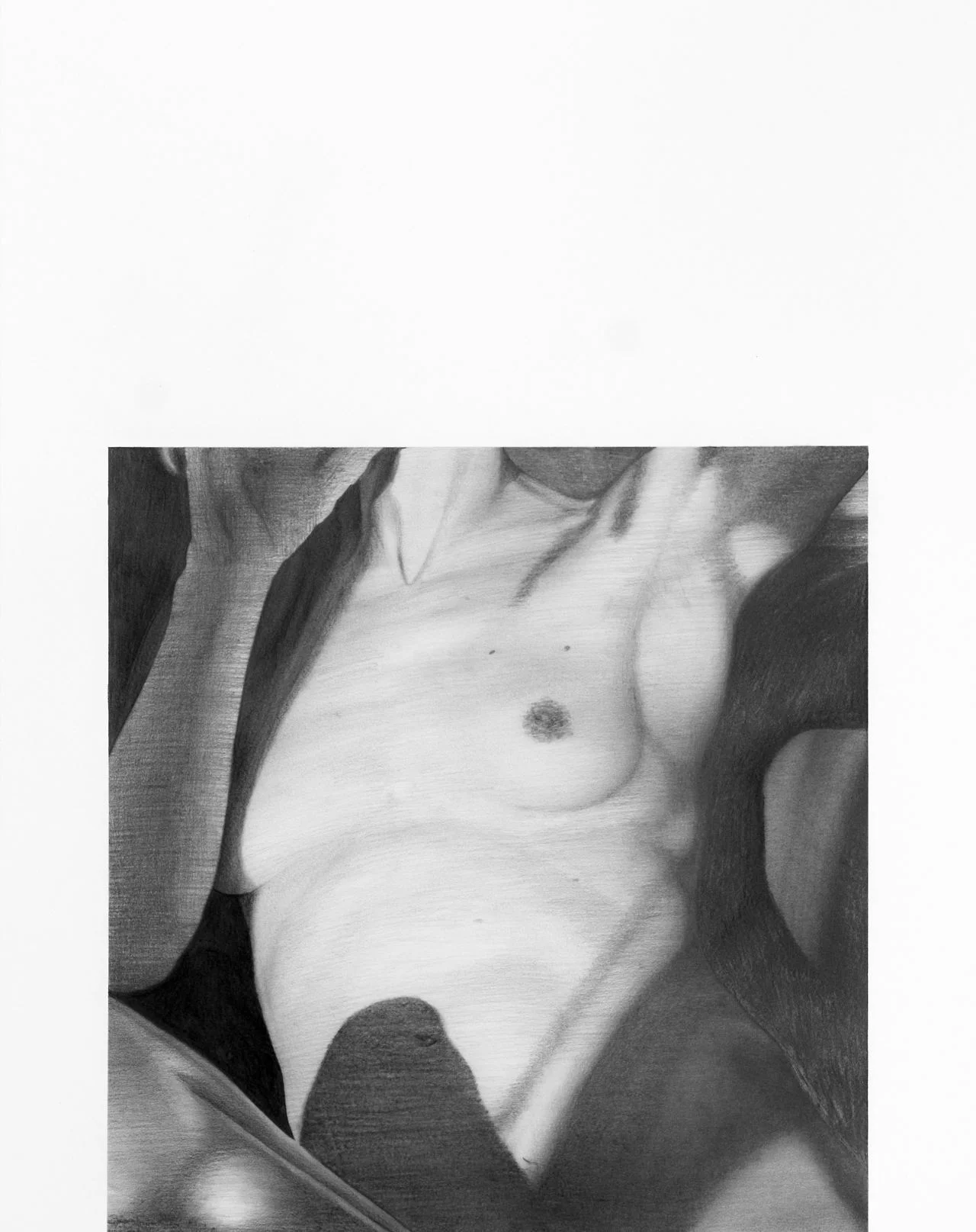Inside Berlin Artist Tim Plamper's Zone
We climb over fences.
We search for our path.
The spot we find is rocky and covered with bones.
“What is it ?”, you asked.
“Fragments of the past”, I answered.
Last September, the Berlin-based artist Tim Plamper presented Zone, his second solo show at Suzanne Tarasieve Gallery in Paris. Delicately hanging on the walls, the exhibition presented a collection of naked bodies, plastic chairs, birds and trees merging into nature settings or house interiors; sometimes layered and abstracted, sometimes isolated and fragmented.
Plamper's images were familiar, since I had already encountered his art through my computer's screen. Nonetheless, the visit of this exhibition completely altered my perception of his work. For the first time, I realized that what I thought were digital collages were, in reality, pencil drawings.
The German artist's images, composed as visual diaries of intimate memories, desires and dreams, became even more touching through the new layer of meaning acquired by the understanding of the medium. Tim Plamper's kunst is one good proof of the possibility for drawing to be relevant in our contemporary era.
What does it imply to work so precisely and humanly into the reproduction of images constructed digitally? In what Walter Benjamin calls The Age of Mechanical Reproduction, using drawing instead of print to materialize a digital image becomes an act of resistance against the homogenization of cultural production and, by extension, of information.
The gesture of drawing is representative of the complexity of the body and mind. It transmits a sensitive power that can’t be made up by machines, and that can remain hidden for everyone who doesn’t take the time to look attentively enough.
The fact that so much time and attention is involved in the production of those images and that, from afar, they look like they’ve just been printed by a machine, really changes the whole appreciation one can have of Plamper’s work. It becomes a liberated act. And maybe that’s what makes it so beautiful. Plamper's approach to reproducing those images through drawings implies strong, stubborn desire.
Beauty becomes poetry.
Photos Suzanne Tarasieve Gallery & Tim Plamper
Video Nowness











